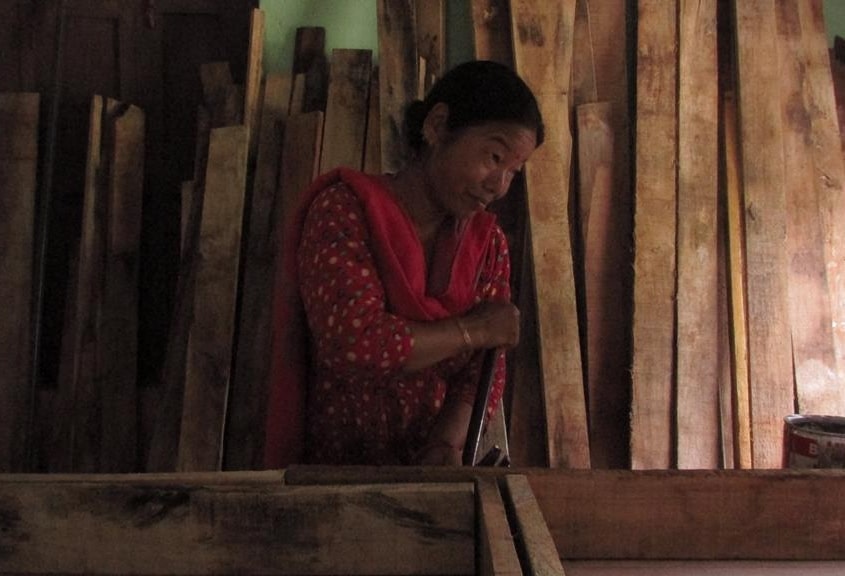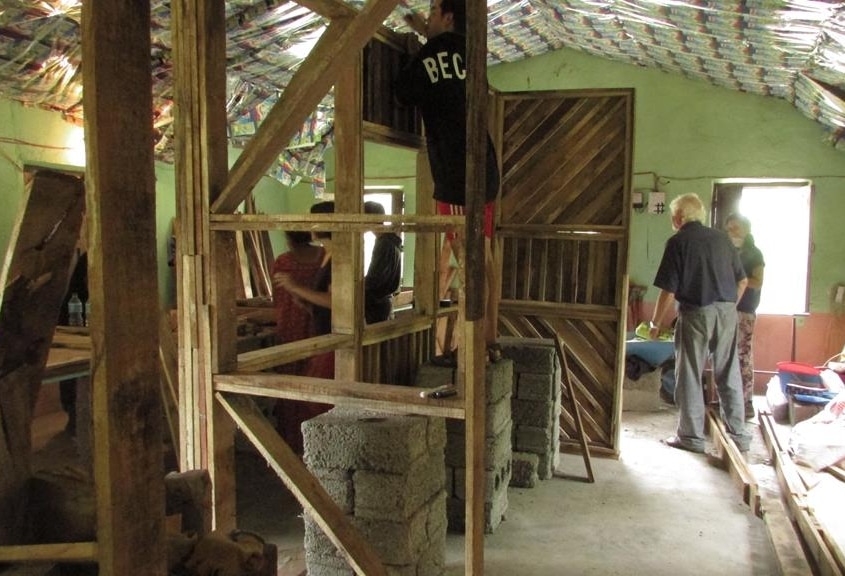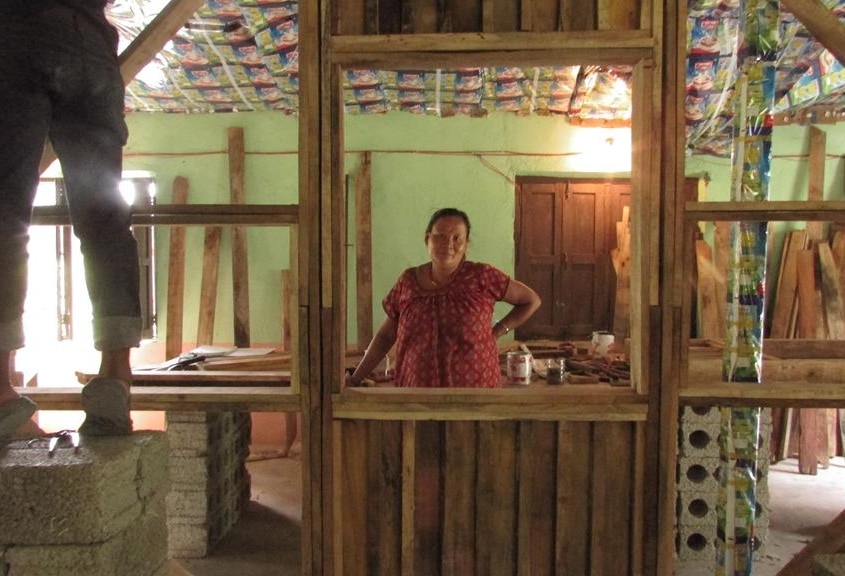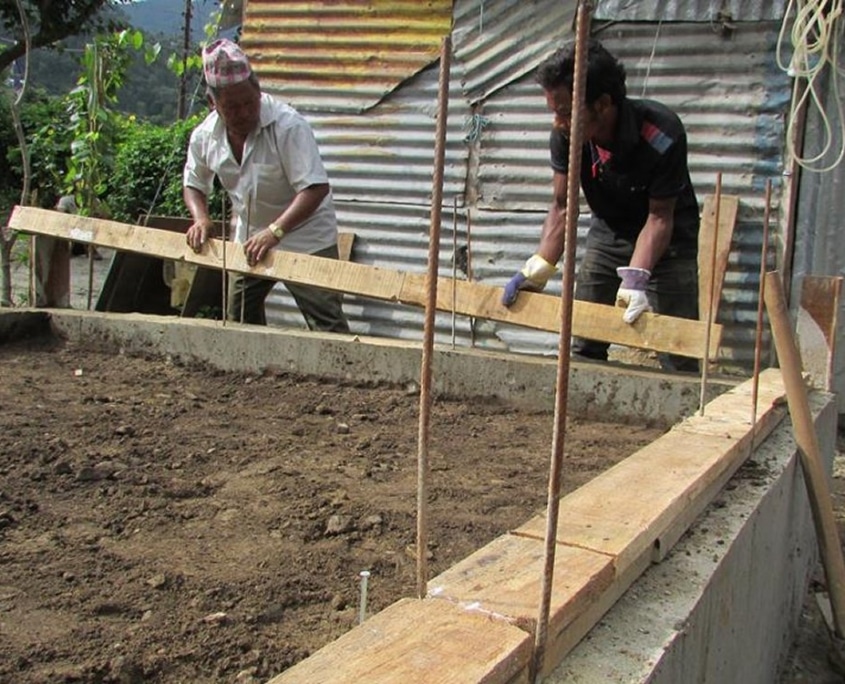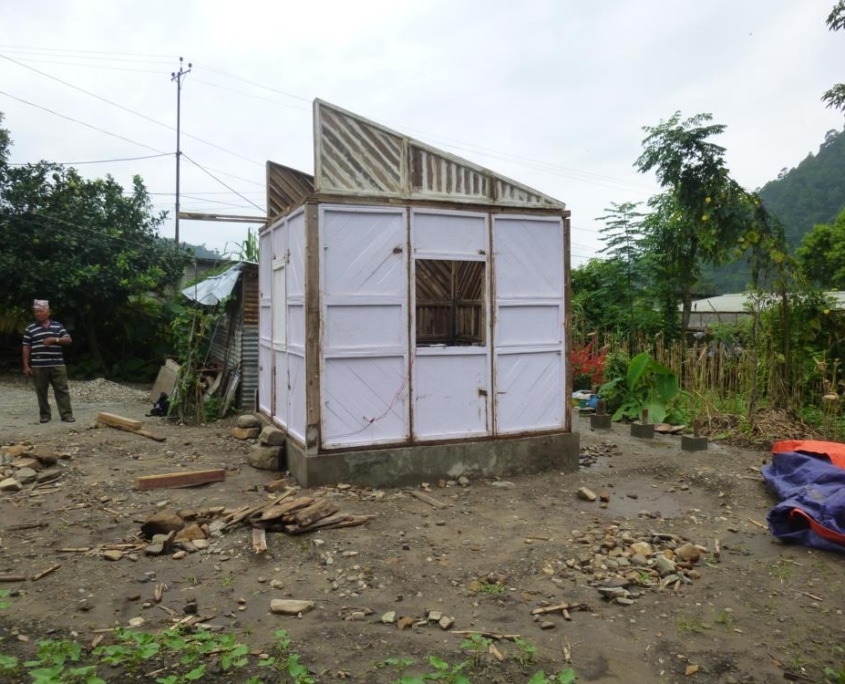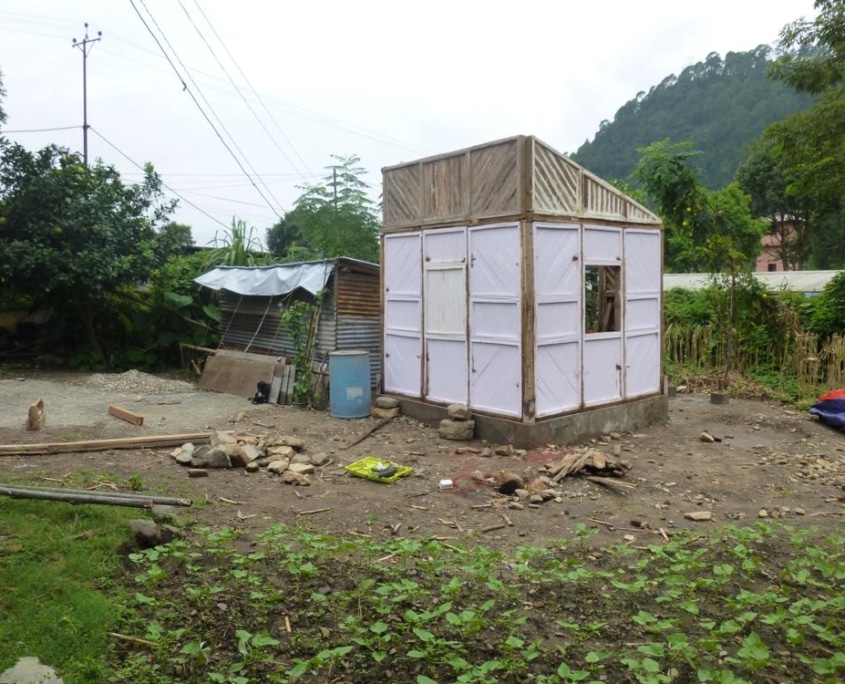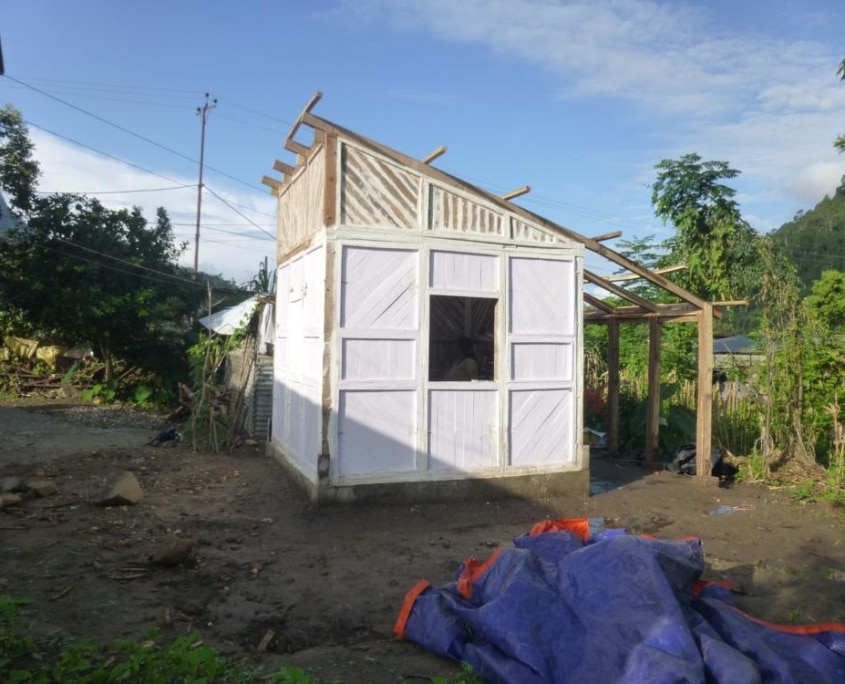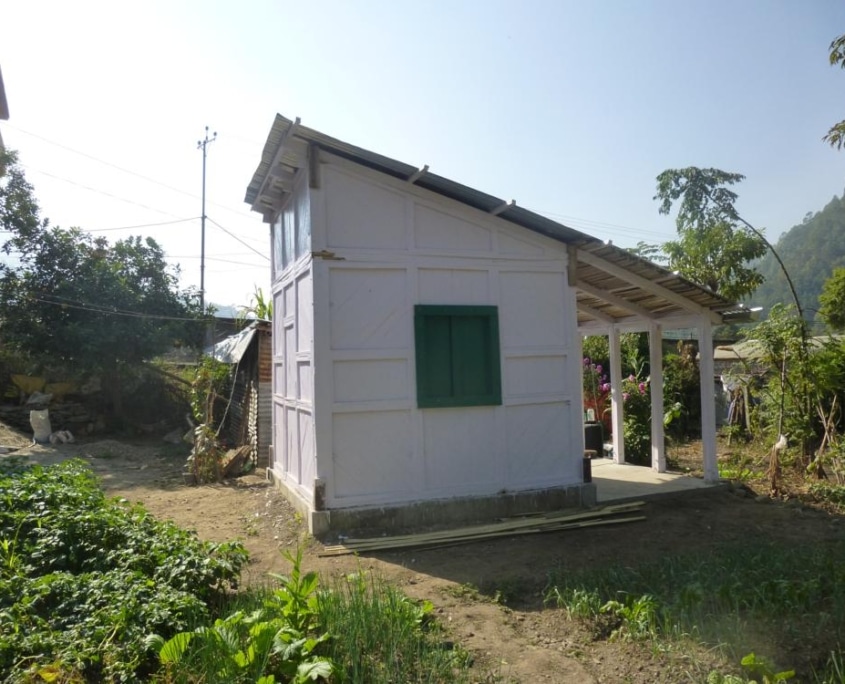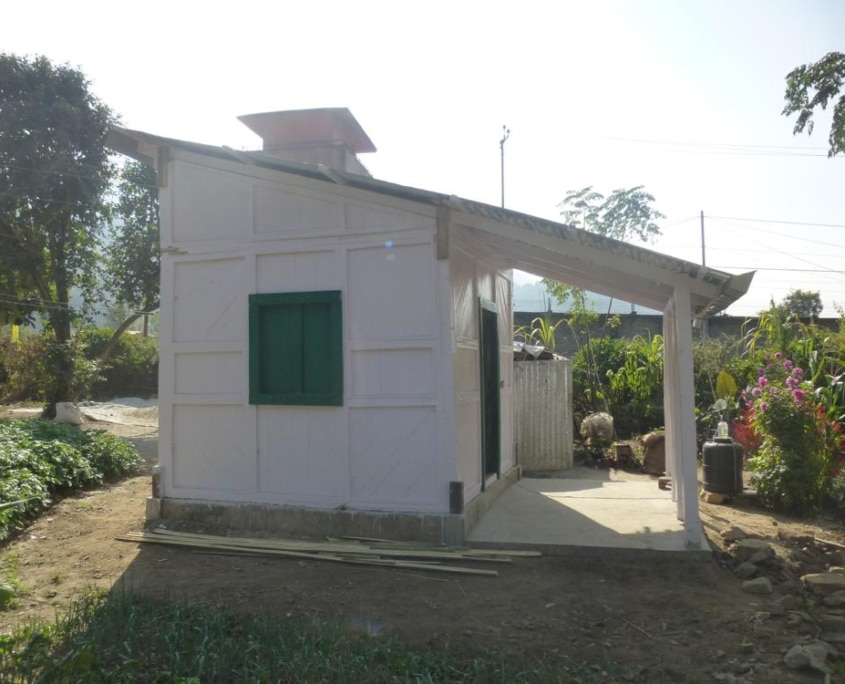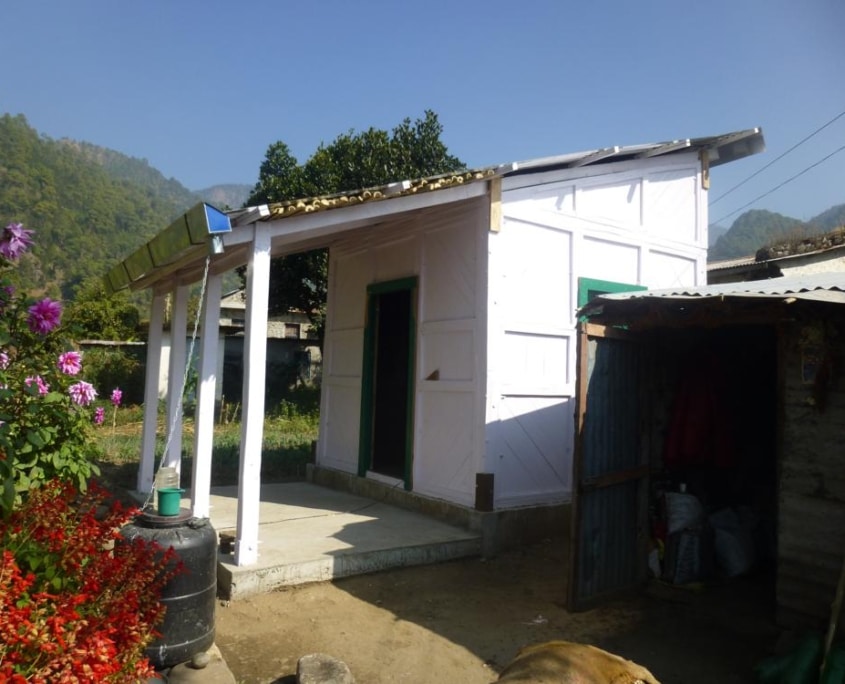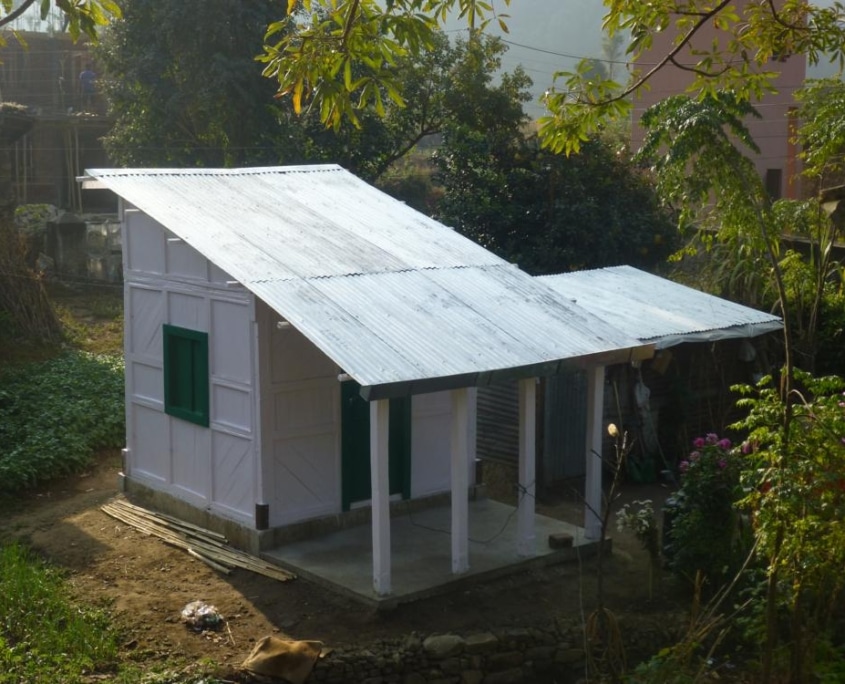Seismic-Resistance
The second selected material was the cheap wooden boards, commonly used for formwork. The chosen typology was the emergency shelter, in order to give alternatives to the existing shelters, which were all very precarious. Some people end up living in this type of dwelling for many years, that’s why Awasuka wanted to offer a more dignified model.
It was decided to introduce Dr. Pedro Lorenzo’s “one board” technique, which he had developed in many Latin American countries: building houses based on modules made of variable length boards. It is a dismountable prototype that can be moved if needed, very suitable for beneficiaries who do not own any land.
Contrary to expectations, this technique was too expensive due to the number of treatments required for wood: anti-termite, polishing and straightening. Dr. Lorenzo was surprised by this result, as in the rest of the countries where he has applied it, the technique has always been very cost-effective and appropriate for social housing. But the quality of the wood purchased in those countries is much better because it is sold with pre-treatment and the sawmills make perfectly straight cuts. In Nepal, however, these two conditions do not occur.
IMPORTANT: Although this technique has not been selected to be replicated, the inhabitants of this prototype – formerly living in a metal-sheet emergency shelter – have greatly improved their quality of life and are very happy with its interior space and, above all, with its thermal comfort.


